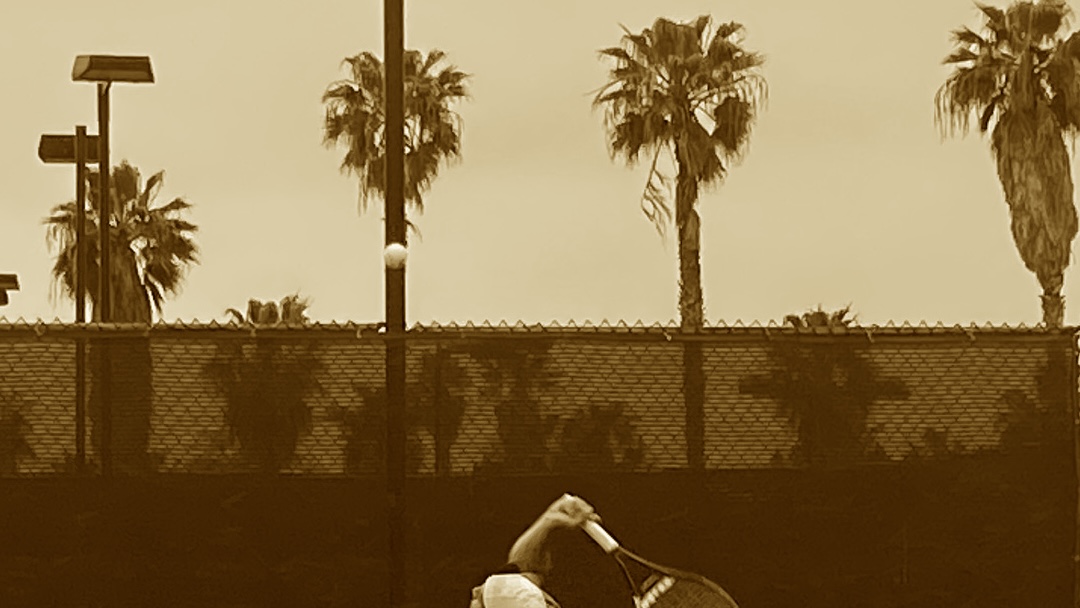Today I am exploring the possibility that I may have possibly once won a point due to a faulty rules interpretation from a USTA official.
A few of years ago I was playing a women’s doubles match in the Fort Worth Major Zone with a partner who has a booming serve. As it turns out, finding a very strong partner turns out to be pretty much my only doubles skill.
On one of my partner’s serves, the pop as the ball came off the racquet was unusually loud. The serve went in, but the receiving opponent lunged for the ball that didn’t bounce off the court as normally anticipated, sailing the return long. When my partner retrieved the ball, it was obvious that it had lost compression.
Upon hearing this, the receiver threw a conniption fit, complaining that the point should have been a let. My partner and I had a different perspective, advocating that the complaint about the ball should have been made while the point, albeit short as it was, was still going on. A let cannot be called after the point has ended.
As it turns out, a potential let call is not the right Friend at Court rule that governs that situation. It also brings us to the first ITF “Case” application in the Rules of Tennis. I believe that the ITF “Cases” are similar to the USTA Comments, but originating from the ITF rather than the USTA. I am still looking for positive confirmation on that. In any case, the rule and the case interpretation read as follows:
If a ball gets broken during play, the point shall be replayed.
Case 1: If a ball is soft at the end of a point, should the point be replayed? Decision: If the ball is soft, not broken, the point shall not be replayed.
USTA Friend at Court, Section 3
So this begs the question, what is the difference between a broken ball and a soft ball? The Friend at Court provides no definition. I asked the umpire I gave birth to for an opinion, but received the usual “go to officials school” before admitting that she didn’t remember if it was even discussed in her training.
As it turns out, I have a photo of the ball that was taken after the match. There is a crack in the ball, but considerable pressure has to be manually applied to the ball to make the crack appear.

During the match in question, one of our opponents summoned the umpire to determine if the point should be replayed, which prompts the observation that throwing a conniption fit is one of many effective methods of bringing an umpire to your court. The ultimate ruling was that the point stood. Ad-in.
To the best of my recollection, the points and counter points made to the umpire all centered around a potential let situation. We did not even realize that there was a crack in the ball until after the match had concluded and one of the spectators showed us the evidence.
In any case, it is hard for me to understand how a modern tennis ball can become soft, but not broken and why there is even a distinction in the rules between the two conditions. I am coming to the realization that I need to find someone in a position of authority to ask. I am also coming to the conclusion that the umpire I gave birth to is right about the fact that I need to take the USTA officials training.
In the meantime, should you ever find yourself in a debate with an opponent or advocating a position with an umpire for a similar situation, the strategic approach is to use the verbiage “soft” if the point was won and “broken” if the point was lost. A healthy dose of hoping that the official is familiar with this esoteric rule would also be helpful. Regardless, I can no longer argue the “let” angle should this ever happen again.
- United States Tennis Association (2020) Friend at Court. White Plains, NY




I was courtside for that match and can attest that there was discussion that the acoustics of the ball sure sound odd due to the proximity of the indoor court wall. No one in my vicinity realized there was an issue with the ball.
Love this idea of yours by the way! And I have a related story of my own… Turns out Chrissie Cooper and I played an entire match with a broken ball. We thought there were a few funny bounces in the match but never even thought to check the balls. It was an umpire that pointed it out to us afterwards. Don’t think it would’ve changed the outcome of the match though…or would it have? 🤔